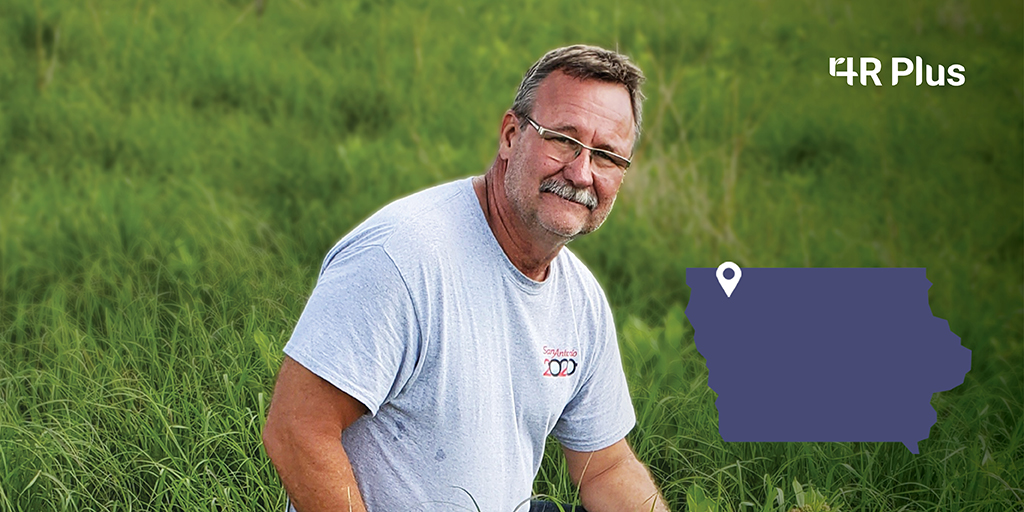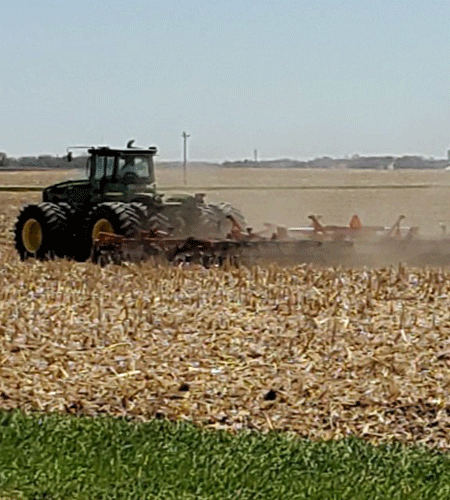
On the flat landscape in O’Brien County, Kelly Nieuwenhuis has been working to increase organic matter in the soil his entire farming career. After a long history in a full tillage program, he switched to one-pass vertical tillage in 2016 and has seen organic matter in the soil increase rapidly.
“We went to narrow, 20-inch rows in 2004, and in 2016, we switched to one-pass vertical tillage in the spring. Now we only work the ground 2-inches deep the day before we plant and leave 99% of residue on the top to protect the soil and absorb moisture,” he said. “Basically, we’re just airing out the soil and warming it up a little bit before planting.”
In comparison, they tilled more often when they were ridge-tilling. “We’d clean the top off the ridges with the planter and then cultivate twice. We were making three passes, where today with vertical tillage we make only one pass,” he said.
Over the winter months, he notices the residue keeps the soil from moving.
Improving soil health brings results

The results have been impressive: increased organic matter in the soil, reduced fertilizer applications, reduced pesticide use, improved water quality, drastically reduced fuel and equipment costs from fewer passes, good earthworm populations – and good yields.
“The soil’s organic matter has grown substantially because of our farming practices,” Nieuwenhuis explained. “Before we went to 20-inch rows, most of our ground was in the 3% to 3.5% range of organic matter. Today, a lot of our land is between 5% and 6.5% organic matter. I can tell the fields we’ve been operating longer because the soil is mellow.”
Keys to successful nutrient management
A one-pass urea application with a nitrogen stabilizer is done in the spring. Because organic matter levels are rising, Nieuwenhuis has been able to reduce volumes of commercial fertilizer. “We run 130 to 150 pounds of nitrogen on bean stubble going into corn and produce 250-bushel corn pretty consistently,” he noted. “On corn on corn, we run 180 to 200 pounds of urea.”
Nieuwenhuis also impregnates pre-emerge herbicides with spring fertilizer applications to eliminate a pass. “We come back most of the time with fungicide treatments on corn and beans, but we only apply insecticides if there’s bugs,” he said.
Testing tile lines for water quality

Tile lines are regularly tested for nitrate levels to assure he’s being a good neighbor. “Tests reveal that our nitrate levels are under 10 ppb (.01 ppm),” he said. Compare that to the U.S. EPA nitrate standard for primary drinking water from public water supplies, which is 10 ppm.
On rented ground, Nieuwenhuis believes it’s important to tailor 4R Plus practices to meet the needs of his landlords. “We’ve added grass waterways and put in filter strips to catch nutrients and keep the soil where it belongs,” he added. “It’s important to treat rented ground like it’s your own.”
He says long-term relationships and good communication with landlords is key. “Our landlords appreciate us taking good care of the ground. We want to pass the ground down better to the next generation. That’s truly our goal.”
Click here to ask Kelly Nieuwenhuis a question about his farming operation.
